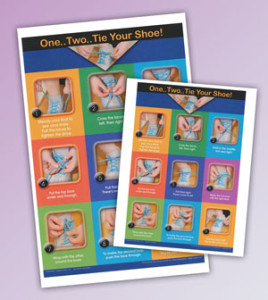On Tuesday, July 28, Therapro was happy to host another successful webina, Self Care with Flair. Presenters Ginger McDonald, OTR/L and Bhanu Raghavan, MS, OTR/L spoke to viewers about Self Care With Flair and teaching independent living skills. These wonderful ladies have over fifty years of combined experience working with students across a variety of settings. Throughout the presentation they drew from these years of experience to provide illustrations of how a consistent, step by step approach works for teaching self care skills. Viewers left the webinar with helpful takeaways, including:
Mastery of self care skills is critical for a child’s self esteem. The presenters spoke passionately about the importance of mastering self care skills early on and how this can improve a child’s self esteem. To exemplify this they discussed toilet training: a skill needed for acceptance in a school setting, community involvement, and employability in later years.
Use a team approach. The presenters described what they called the partiship triad, where parents or caregivers, teachers, and therapists work together in the teaching of both the self care skill itself and the prerequisite hands skills needed for successful participation. As one viewer noted, “Lots of information for both OT, teachers and parents. Love the team approach and having more information in the book will be an asset for every classroom.” – KF
Use a uniform approach. The presenters discussed the importance of consistency between everyone involved in the teaching process; from grandma, to the therapist, to the classroom teacher. Using consistent language and teaching approaches promotes learning and retention. In the Self Care With Flair program, the same steps, the same pictures, and the same cues are used, leading to successful learning outcomes. Another useful aspect of Self Care With Flair is that the visuals can be shared with everyone working with the child, ensuring consistency across settings! As one viewer stated, “This is an excellent resource. The work has been done – rhymes, pictures, repetition. It speaks for itself!” – AH
Use rhythms. Rhymes are easy to memorize and make learning the steps of a task so much easier. Rhymes are also a great way to promote consistency across multiple environments and to help with self correction. The presenters pointed to research that supports the use of rhymes for teaching the steps of a task.
Teach Prerequisite Skills. Another important point that was covered in the webinar was the importance of addressing the foundational hand skills needed for success with self care tasks. In the book Self Care With Flair, each prerequisite skill needed for the given self care task is listed with the self care task itself. The final chapter in Self Care With Flair includes activity ideas to address the essential hand skills needed (finger strengthening, finger to thumb opposition, forearm strengthening, lateral pinch, power grasp, thumb strengthening and wrist extension).
The presenters also discussed modifications to meet the needs of all users, teaching tips to use when introducing these tasks, and ideas for personalization. Check out the recording of the webinar, and be sure to check out our free resources page for examples from the book!


